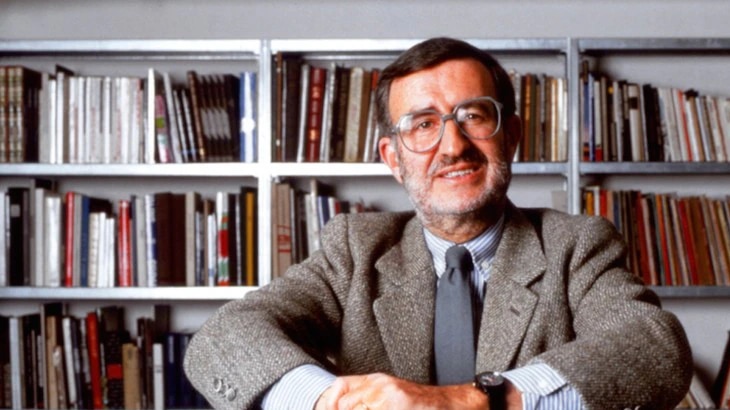Milan has piazzas that are too big and that cannot cope with the convergence of the streets; it has lopsided spaces with unusual geometrical forms and a lack of design, just as Carlo Emilio Gadda said. But Milan is a unique city. Though a large metropolis, it has a manageable size, and its multiple centres connect it to the beautiful surrounding cities. Its combination of large- and small-scale architecture should make us want to look after it, something that does not apply with the gigantism of other major cities. To give trivial examples, its signs should be cleaned, its flags laundered, the graffiti removed from walls and monuments, and SUVs banished from its streets.
It is a city of extraordinary architecture. In terms of modern buildings, there is Piero Portaluppi, Gio Ponti and Giuseppe Sommaruga, but also a coherent set of examples from the 1920s and ‘30s, well restated in the drawings of a Milanese Saul Steinberg. There is its postwar architecture to be reassessed. Though generally very bad, there are some outstanding examples – the first European skyscraper (the Pirelli building) and the Velasca Tower, which caused a crisis for the International Style as a kind of disease of rationalism. There are other things to reconsider: works by less well-known architects, brutalism and geometrical forms made up of coloured grids dotted around the Navigli canals and the Spanish walls. Then there are Caccia Dominioni’s and Vico Magistretti’s works, more sublime than others and representing a pure Milanese syntax.

Today there is an extraordinary work by Fuksas at the Rho trade-fair complex, a Bicocca building by Gregotti (which I seem to be the only one defending), Bellini’s side of the old trade-fair centre, as well as Cino Zucchi with memory-rich buildings in the Portello area, where there will also be clear-cut geometric towers by Guido Canali, and Grafton’s new stone rampart for Bocconi University. A local government that abandons its leadership role and fails to give direction will give permission for buildings that do not always touch the heights, as has already happened with the grotesque transformation of the old trade fair. A new form of architecture, however, bears witness to a more widespread savoir faire, the work of more innovative young designers who are aware of their role (the danger is that they do trivialise themselves in stylistic conformism). Similar new faces in all professions are reaffirming the cultural force that made the city great, and that still today is alive and strong and creating meeting places with new connections and involvements, not just in fashion and design.
But when I stopped in Viale Coni Zugna and looked at the Parco Solari swimming pool, I wondered with anguish how many decades it has been since a real public work was completed in Milan – a swimming pool, a school, a social-housing block, a park or a public space. I wondered what furtive penny-pinching, what inability to see the big picture, had led to a new 1,800-metre-long trade fair with a metro stop that isn’t at its centre, but 200 metres from its west end. Why doesn’t the metro go as far as Linate Airport, which is only another kilometre away?
Inability to think big must be overcome by the Expo in 2015. After bad beginnings, summed up in an embarrassingly small-town logo, there are signs of hope. The banal first renderings have been abandoned, and a new solution devised by Boeri, Burdett and Herzog & de Meuron includes more original utopian green ideas that are less wasteful than those of previous international expos. Let’s hope this solution is more open to creative energy and free from powerful factions holding back the city. It would be a miracle in Milan.


